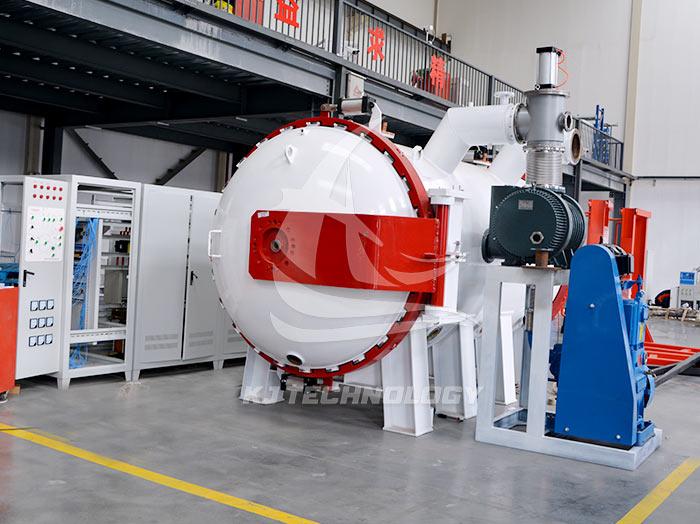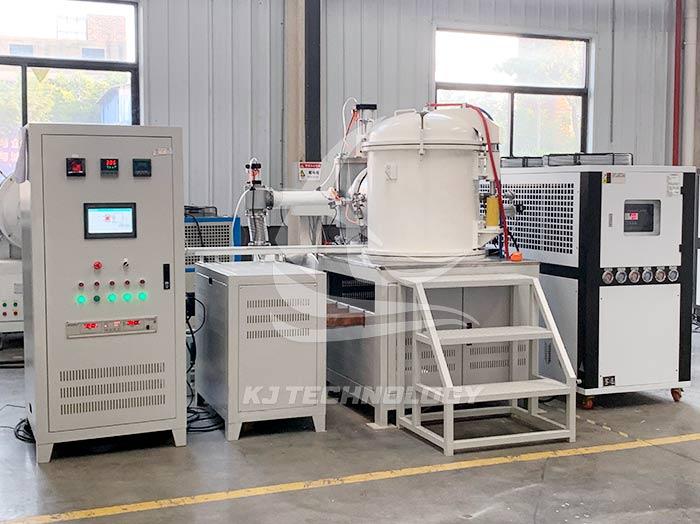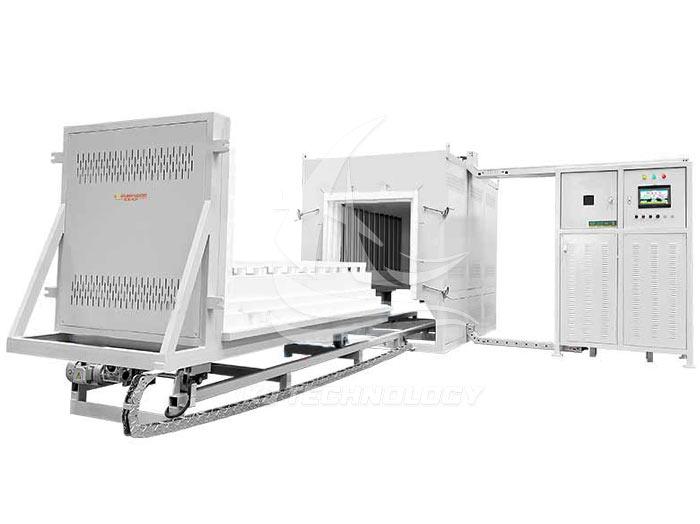What processes can be used in laboratory graphite vacuum furnaces?
 08-06-2025 Author: KJ technology
08-06-2025 Author: KJ technology
The laboratory graphite vacuum furnace, relying on the excellent properties of graphite materials such as high temperature resistance, low thermal expansion coefficient, chemical inertness, etc., can achieve various high-temperature processes and is widely used in material preparation, heat treatment, and special environment synthesis. The following are its main processes and specific applications:
1. Core process type
High temperature sintering
Process principle: Under vacuum or inert atmosphere, the powder or compact is densified by heating it to 1000-2200 ℃ with a graphite heating element, forming high-strength materials.
Typical applications:
Ceramic materials: densification sintering of ceramics such as zirconia, silicon nitride, and silicon carbide to enhance hardness and wear resistance. For example, after sintering in a graphite vacuum furnace, the bending strength of silicon nitride ceramic bearings can reach 1200 MPa.
Metal materials: Melting and purification of non-ferrous metals such as copper and aluminum to reduce oxidation impurities and improve purity. Graphite crucibles can withstand corrosion from aluminum liquid, with a corrosion rate of less than 0.1 mm/year.
Composite materials: Infiltration and sintering of carbon fiber reinforced ceramic matrix composites (C/C-SiC), graphite molds can withstand high pressure of 2000 ℃ (≥ 50 MPa), ensuring that the material is free of carbon pollution.
heat treatment
Process principle: By precise temperature control (± 1 ℃) and atmosphere adjustment, the microstructure of materials is optimized to improve performance.
Typical applications:
Vacuum quenching: Metal workpieces are rapidly cooled after heating in a vacuum environment to improve hardness and wear resistance. For example, after ion carburizing in a graphite vacuum furnace, the surface hardness of titanium alloy increases by three times.
Graphitization treatment: Carbon/carbon composite materials undergo graphitization at 2500 ℃, forming ordered graphite crystal structures and increasing thermal conductivity to over 100 W/(m · K).
Annealing: Eliminating internal stress in metal materials and improving processing performance. Graphite heating tubes can achieve uniform heating and avoid cracking caused by local overheating.
Special environment synthesis
Process principle: Utilizing vacuum or inert atmosphere (such as nitrogen or argon) to suppress oxidation reactions and achieve the synthesis of special materials.
Typical applications:
Chemical Vapor Deposition (CVD): Deposition of thin films such as diamond and silicon carbide on graphite substrates. The graphite boat needs to have high permeability (porosity of 15-20%) to uniformly transport reaction gases.
Single crystal growth: Semiconductor silicon single crystals are grown in graphite crucibles with metal impurities (such as Fe, Ni) content below 10 ppm to ensure crystal quality.
Preparation of nanomaterials: Graphene, carbon nanotubes, etc. are synthesized by chemical vapor deposition in a graphite vacuum furnace. The graphite substrate provides a uniform thermal field, promoting the formation of nanostructures.
2. Process advantages and technical support
Temperature uniformity
The graphite heating element is arranged reasonably with a temperature difference of ≤ ± 5 ℃ inside the furnace to ensure uniform heating of the sample. For example, in ceramic sintering, a uniform temperature field can prevent abnormal grain growth and improve material properties.
Controllability of atmosphere
Support vacuum (≤ 5 × 10 ⁻⁶ mbar) or inert atmosphere (such as nitrogen, argon) to meet different process requirements. For example, in metal smelting, a nitrogen atmosphere can prevent oxidation and improve metal purity.
Material adaptability
Graphite is resistant to high temperatures (stable below 2500 ℃), chemically inert (resistant to molten metal and acidic gas corrosion), and can handle a variety of materials. For example, graphite pipelines transport corrosive media in the chlor alkali industry, with a lifespan of over 10 years.
Structural support
Graphite can be processed into complex shapes (such as brackets, trays, rails) to support high-temperature workpieces. For example, graphite beams can maintain a lubricating film in a vacuum furnace for a long time, reducing maintenance costs.
3. Typical application scenarios
EADS
Preparation of ceramic turbine blades and carbon/carbon composite hot end components, with a temperature resistance of 1500 ℃, 40% lighter than metal components, and a 2-fold increase in creep resistance.
Semiconductor Manufacturing
Silicon wafer epitaxial growth, single crystal silicon thermal field control, graphite heater provides uniform heat source to ensure crystal quality.
In the field of new energy
Sintering of lithium-ion negative electrode materials, preparation of fuel cell electrodes, and precise control of atmosphere and temperature in graphite vacuum furnaces can enhance the electrochemical performance of materials.
medical equipment
The sintering of artificial joint ceramic implants results in a bending strength of 1200 MPa for zirconia ceramics and a wear resistance 10 times higher than that of metals.








